Abstract
The catechol amines excite the isolated heart of Venus mercenaria in a characteristic manner. This response was not obtained with phenethylamine, tyramine, ephedrine, or mescaline, nor with histamine, nor with the basic n-alkylamines. 5-Hydroxytryptamine had a distinctive effect at high concentrations (above 3×10-6 M) different from that at lower doses. The response to high concentrations was dominated by an increase in muscle tone. Hearts exposed to high concentrations of 5-hydroxytryptamine and other tryptamine analogues for long periods became tachyphylactic to low doses of these substances. However, high doses of 5-hydroxytryptamine (about 2×10-5 M) still excited the tachyphylactic heart, but the response was then like that to the catechol amines. When high bath temperatures rendered the heart insensitive to 5-hydroxytryptamine, high concentrations of this compound again had the catechol amine effect. The possibility of a physiological role for the catechol amines or high 5-hydroxytryptamine concentrations is discussed.
Full text
PDF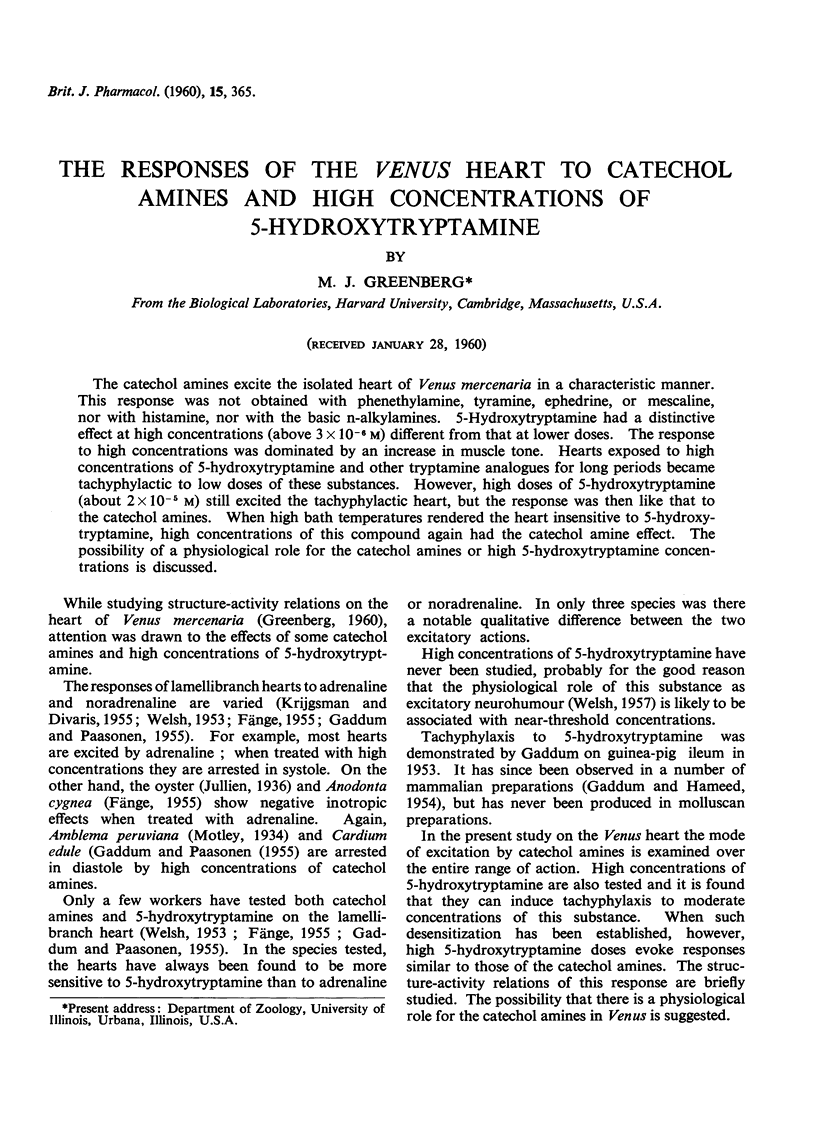
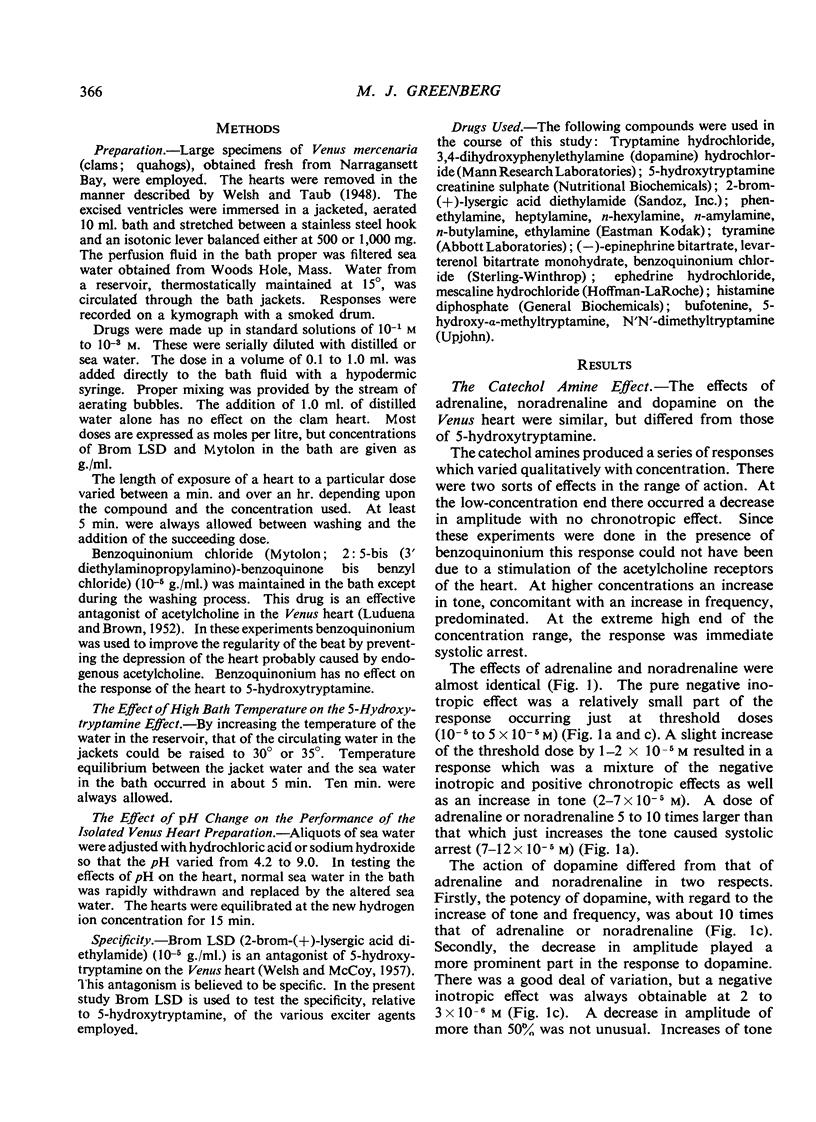
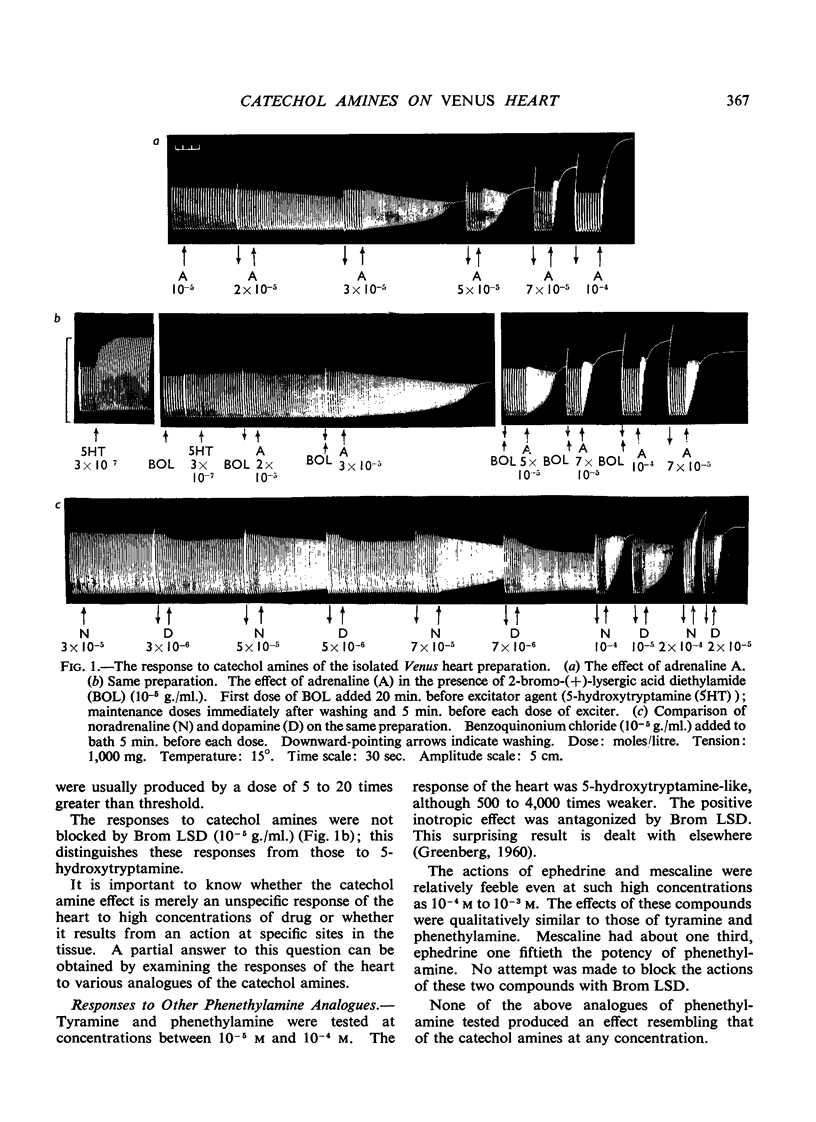
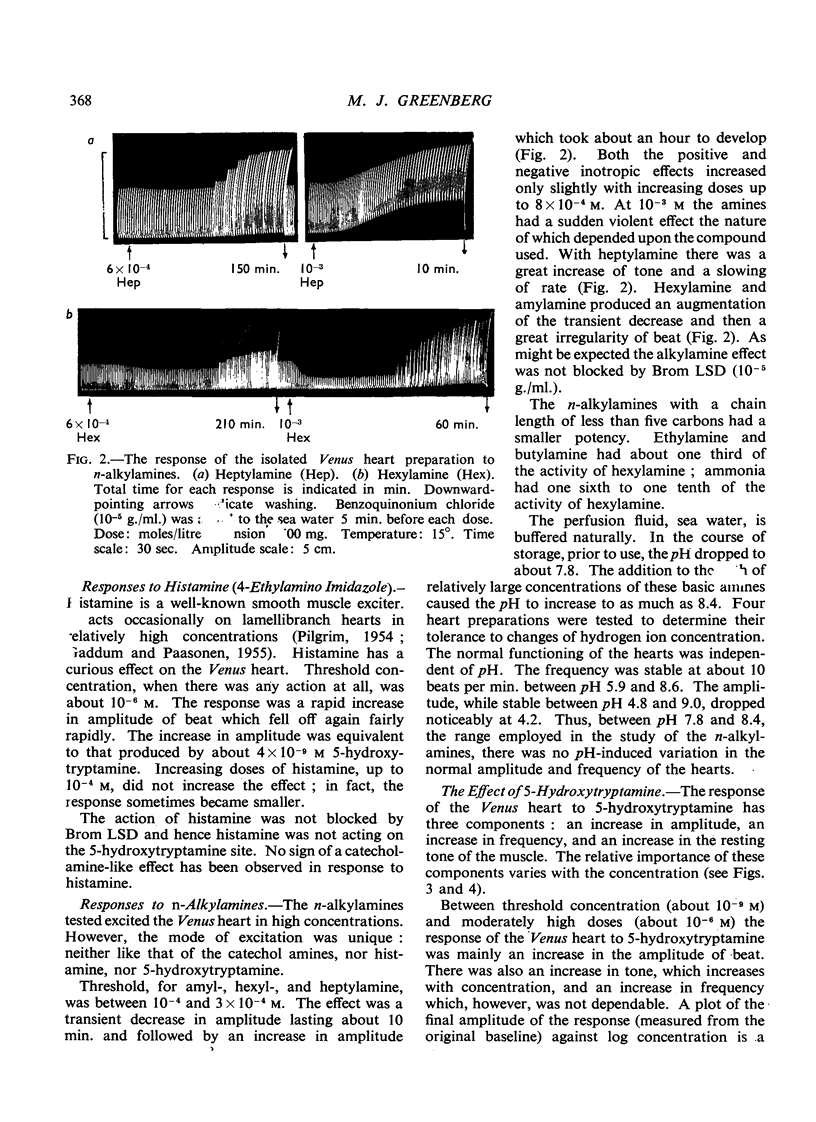
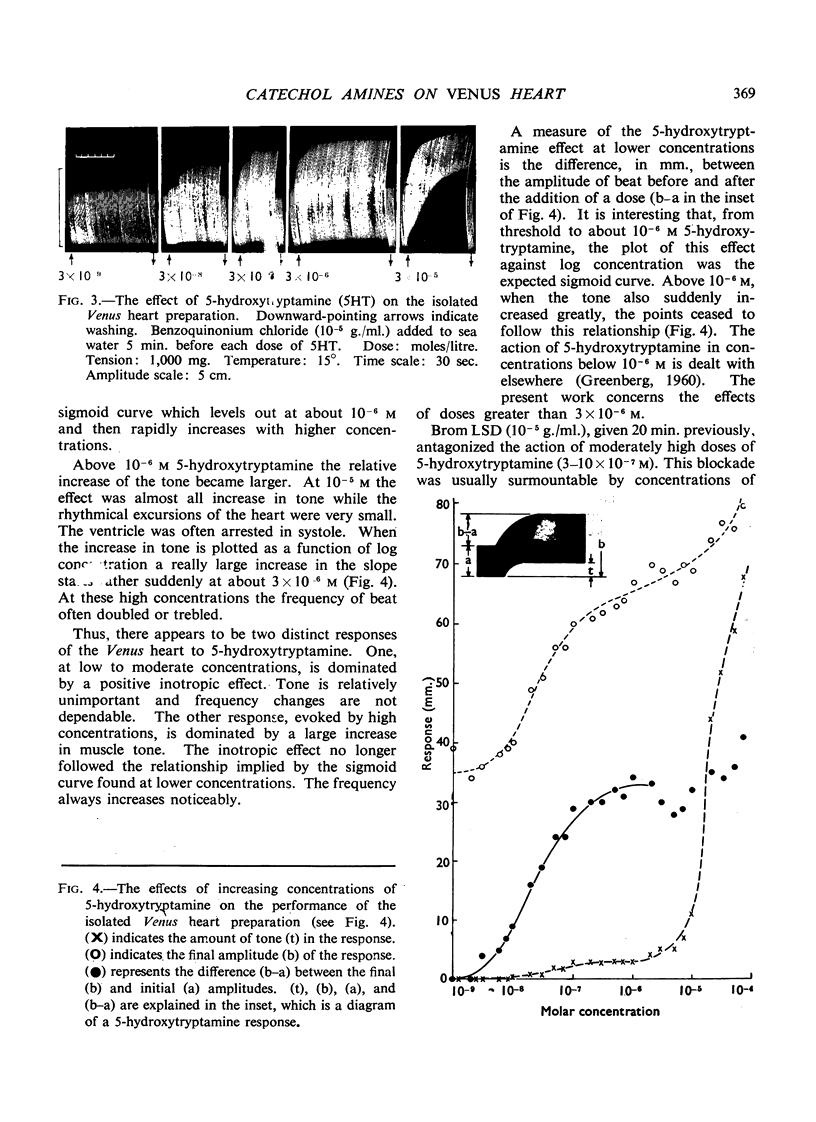
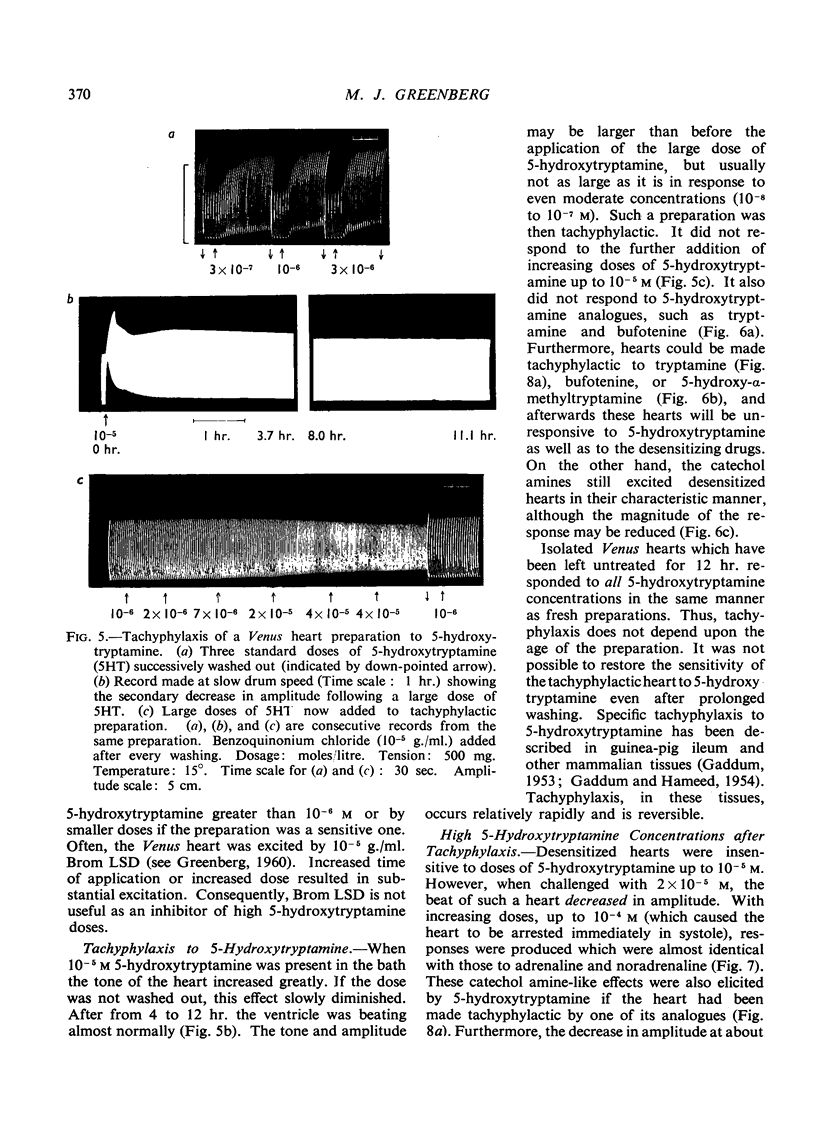
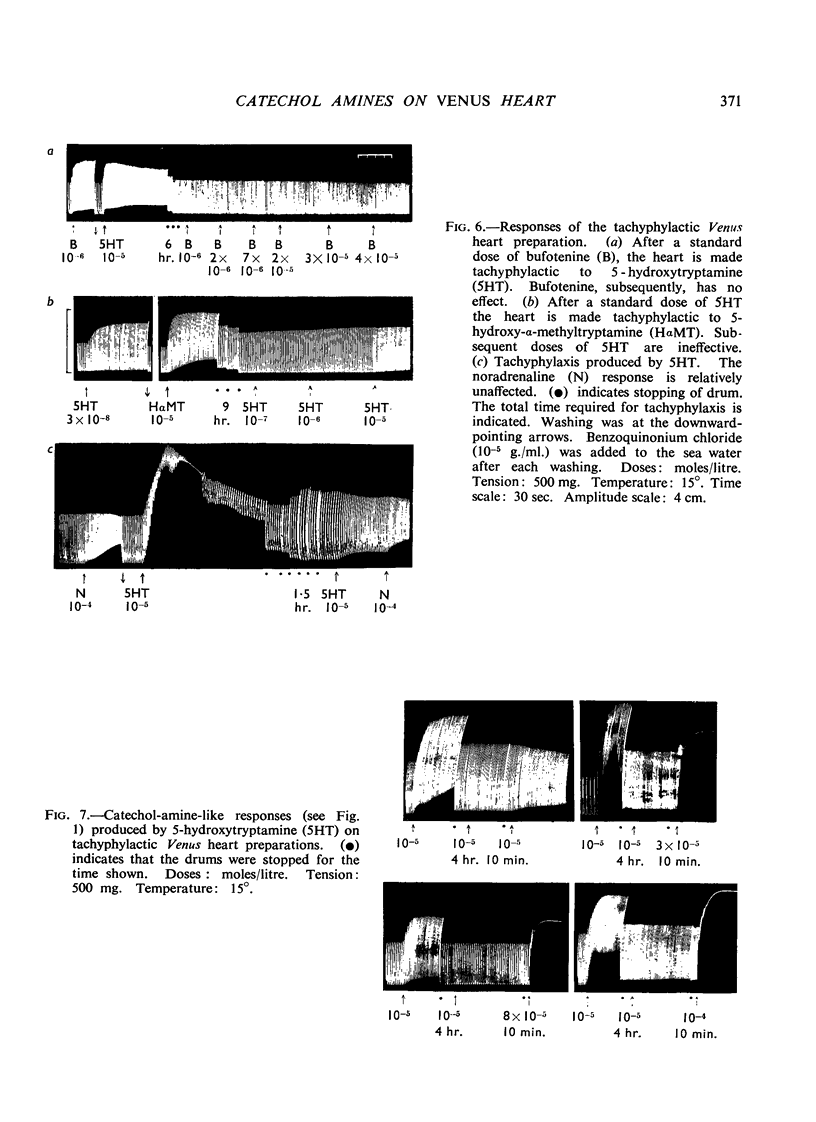
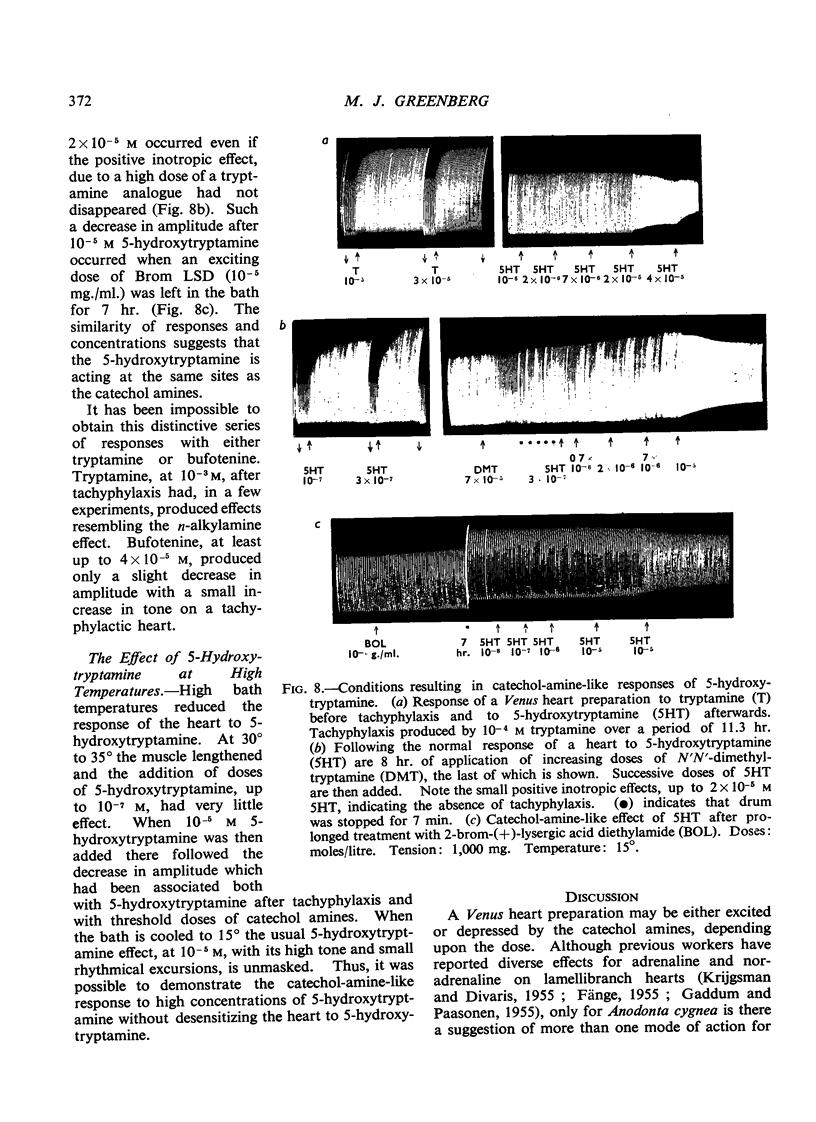
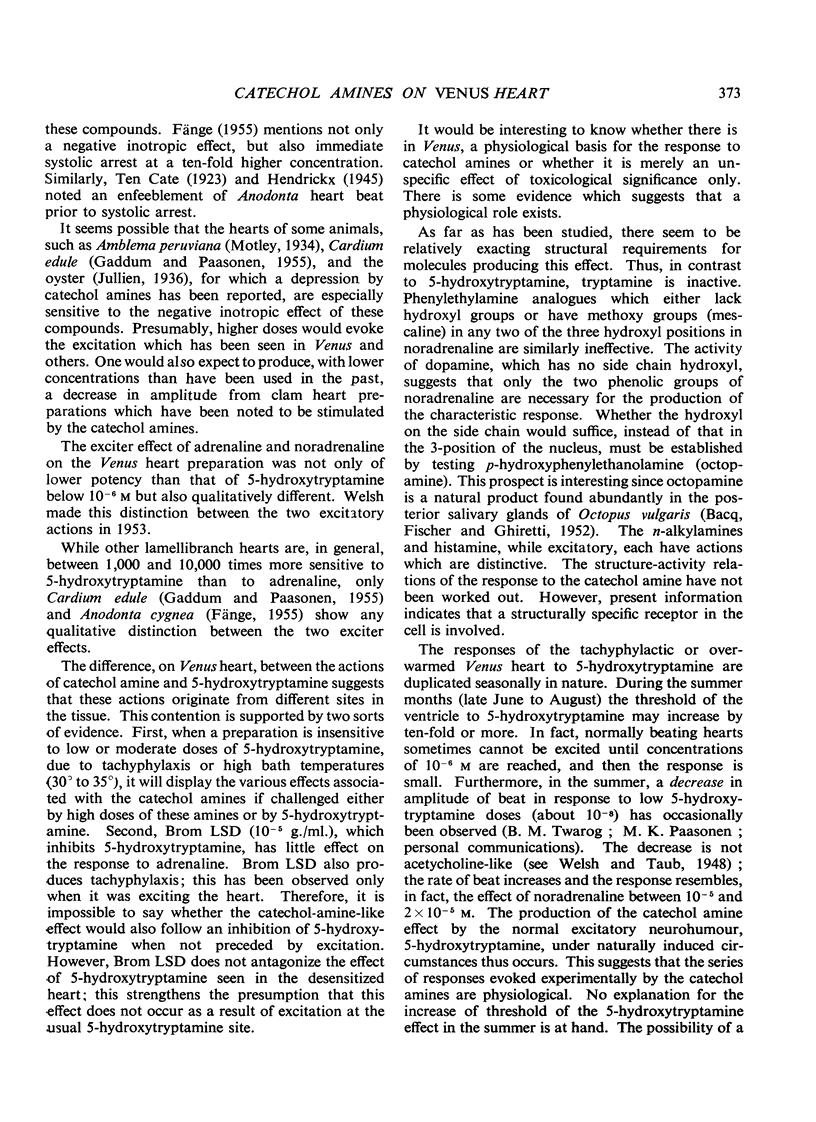
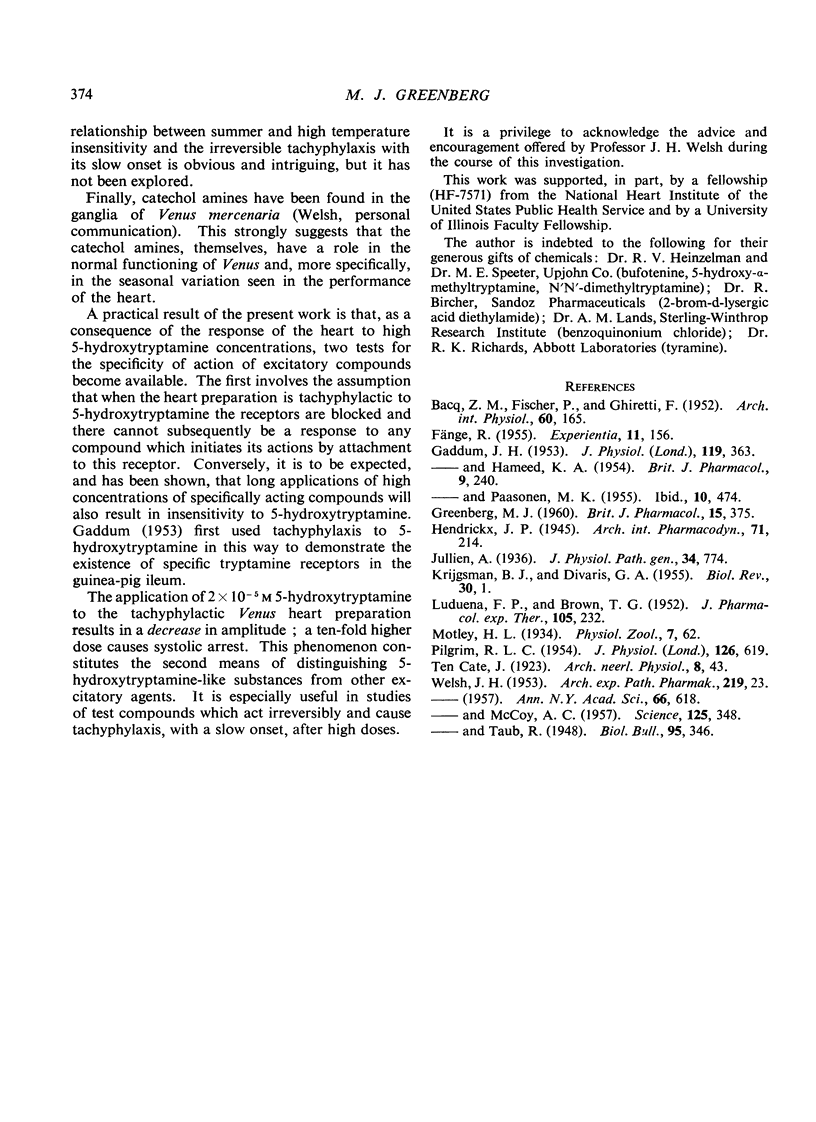
Selected References
These references are in PubMed. This may not be the complete list of references from this article.
- BACQ Z. M., FISCHER P., GHIRETTI F. Action de la 5-hydroxytryptamine chez les céphalopodes. Arch Int Physiol. 1952 Jun;60(2):165–171. doi: 10.3109/13813455209145054. [DOI] [PubMed] [Google Scholar]
- FANGE R. Use of isolated heart of a freshwater mussel (Anodonta cygnea L.) for biological estimation of 5-hydroxytryptamine. Experientia. 1955 Apr 15;11(4):156–156. doi: 10.1007/BF02158480. [DOI] [PubMed] [Google Scholar]
- GADDUM J. H., HAMEED K. A. Drugs which antagonize 5-hydroxytryptamine. Br J Pharmacol Chemother. 1954 Jun;9(2):240–248. doi: 10.1111/j.1476-5381.1954.tb00848.x. [DOI] [PMC free article] [PubMed] [Google Scholar]
- GADDUM J. H., PAASONEN M. K. The use of some molluscan hearts for the estimation of 5-hydroxytryptamine. Br J Pharmacol Chemother. 1955 Dec;10(4):474–483. doi: 10.1111/j.1476-5381.1955.tb00108.x. [DOI] [PMC free article] [PubMed] [Google Scholar]
- GADDUM J. H. Tryptamine receptors. J Physiol. 1953 Feb 27;119(2-3):363–368. doi: 10.1113/jphysiol.1953.sp004851. [DOI] [PMC free article] [PubMed] [Google Scholar]
- LUDUENA F. P., BROWN T. G., Jr Mytolon and related compounds as antagonists of acetylcholine on the heart of Venus mercenaria. J Pharmacol Exp Ther. 1952 Jun;105(2):232–239. [PubMed] [Google Scholar]
- MCCOY A. C., WELSH J. H. Actions of dlysergic acid diethylamide and its 2-bromo derivative on heart of Venus mercenaria. Science. 1957 Feb 22;125(3243):348–348. doi: 10.1126/science.125.3243.348. [DOI] [PubMed] [Google Scholar]
- PILGRIM R. L. The action of histamine on the hearts of two lamellibranch molluscs. J Physiol. 1954 Dec 10;126(3):619–622. doi: 10.1113/jphysiol.1954.sp005230. [DOI] [PMC free article] [PubMed] [Google Scholar]
- WELSH J. H. Excitation of the heart of Venus mercenaria. Naunyn Schmiedebergs Arch Exp Pathol Pharmakol. 1953;219(1-2):23–29. doi: 10.1007/BF00246246. [DOI] [PubMed] [Google Scholar]


